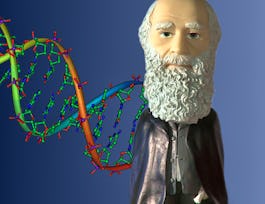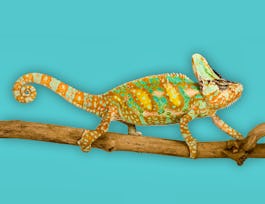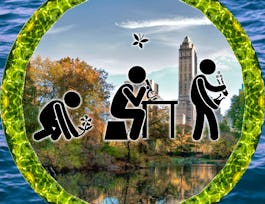Evolution is one of the most interesting fields within biology, and one that’s central to a complete understanding of modern biology. We begin by tracing how Charles Darwin developed a theory of evolution by natural selection and the many ways that biologists have advanced the science of evolution since his lifetime. We then go on to learn about the many applications of evolutionary biology to our everyday lives.



Introduction to Biology: Evolution
This course is part of Introduction to Biology: Ecology, Evolution, & Biodiversity Specialization

Instructor: Scott Solomon
Sponsored by ITC-Infotech
4,007 already enrolled
(54 reviews)
Recommended experience
What you'll learn
How biologists advanced the science of evolution since Charles Darwin; the many applications of evolutionary biology to our everyday lives.
Skills you'll gain
Details to know

Add to your LinkedIn profile
10 assignments
See how employees at top companies are mastering in-demand skills

Build your subject-matter expertise
- Learn new concepts from industry experts
- Gain a foundational understanding of a subject or tool
- Develop job-relevant skills with hands-on projects
- Earn a shareable career certificate


Earn a career certificate
Add this credential to your LinkedIn profile, resume, or CV
Share it on social media and in your performance review

There are 6 modules in this course
What's included
2 videos3 readings1 discussion prompt
In this module, we will learn how ideas about evolution changed from ancient Greece to Victorian England, when two naturalists independently developed a theory of evolution by natural selection.
What's included
6 videos8 readings2 assignments1 discussion prompt
In this module, we will learn what Darwin proposed about evolution by natural selection, how the other mechanisms of evolution work, and how the Hardy-Weinberg Principle can be used to determine whether a population is evolving.
What's included
6 videos8 readings3 assignments
In this module, we will learn about the process of speciation, how evolutionary relationships can be depicted using phylogenetic trees, and some of the practical applications of phylogenetics.
What's included
4 videos6 readings2 assignments1 discussion prompt
In this module, we will learn about the many different types of evidence for evolution– including the fossil record, biogeography, comparative anatomy, and direct observation– and gain an appreciation for the role of evolution in the development of antibiotic-resistant bacteria.
What's included
6 videos9 readings3 assignments1 discussion prompt
What's included
1 video1 peer review
Instructor

Offered by
Why people choose Coursera for their career




Learner reviews
54 reviews
- 5 stars
92.59%
- 4 stars
7.40%
- 3 stars
0%
- 2 stars
0%
- 1 star
0%
Showing 3 of 54
Reviewed on Aug 2, 2024
Though introductory the presentation and discussion style is highly useful and intuitive that helps one to get a bigger picture.
Recommended if you're interested in Physical Science and Engineering

Duke University

American Museum of Natural History

Universiteit Leiden

University of Colorado Boulder

Open new doors with Coursera Plus
Unlimited access to 10,000+ world-class courses, hands-on projects, and job-ready certificate programs - all included in your subscription
Advance your career with an online degree
Earn a degree from world-class universities - 100% online
Join over 3,400 global companies that choose Coursera for Business
Upskill your employees to excel in the digital economy


